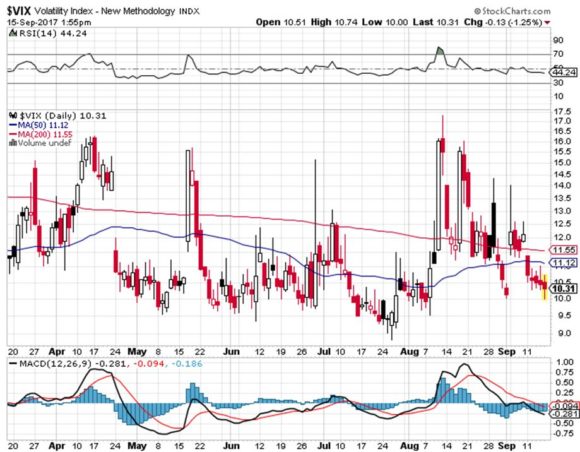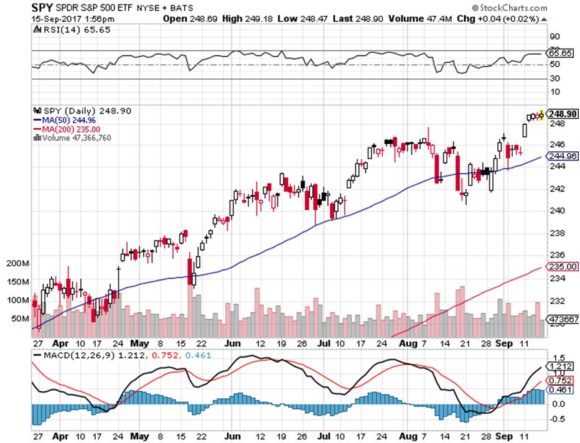I received a call from a hedge fund manager on Friday warning me of what was about to hit the market.
Contents
THE SPECIAL OFFER
Watch The Latest John Thomas Webinar Here
So much money had poured into “risk parity strategies” that it was starting a long term secular trend upward in market volatility (VIX). It was a classic case of too many people bunching up at one end of the canoe.
Witness last week’s North Korea inspired $270 point near instantaneous dump in the Dow Average, which then vaporized almost instantly.
Investment advisors everywhere are bemoaning the shenanigans of high frequency traders, offshore hedge funds, and the Chinese for the recent volatility of the market that has been scaring the living daylights out of their clients.
But they have a new enemy that few outside the trading community is aware of: “Risk Parity” managers.
Risk parity is being blamed for the August explosion of volatility from 9% to 17% in a matter of days.
The industry is thought to have $400-$600 billion in assets under management now, with hedge funds Bridgewater and AQR in the lead.
Potentially, they could unload as much as $100 billion worth of stocks in days.
What’s more, the fun and games aren’t confined to just equities. Risk parity strategies have spread like a pandemic virus to bonds (TLT), foreign exchange, commodities, and even precious metals.
Risk Parity is an esoteric new investment strategy that targets a specific volatility level, rather than a return relative to a convention benchmark, like Treasury bonds or the S&P 500 (SPY).
When volatility (VIX) is low, they add risk, hoping to beat the returns of competitors. When volatility is high, they cut back positions, hoping they miss the losses of others.
The goal is to come out on top of the money manager league tables, sucking in tons of new assets and countless riches in management fees.
You can see right now where this is going.
In rising markets they increase buying, and in falling ones they greatly step up selling.
I’m sure there was a day several years ago when this approach made money hand over fist.
That was probably back when only its inventor was implementing it alone in a back room and an undisclosed hedge fund with a tiny amount of capital.
The problem with risk parity and all other strategies of its ilk is that they become victims of their own success. New capital pours in, returns fall, until they inevitably dive into negative numbers.
I have seen this occur time and again, from the portfolio insurance of the 1980’s (think October, 1987 when the Dow plunged 20% in a single day), to Japanese warrant arbitrage, to high frequency trading and the flash crashes.
The proof is in the pudding.
An index of 17 risk parity funds tracked by JP Morgan has fallen by 8.2% since the beginning of May. More losses are to come. It sounds like the great unwind of risk parity assets has already started.
Like all investment fads that promise great risk free returns, this one will come and go.
In the meantime, fasten your seatbelt.


THE SPECIAL OFFER
Watch The Latest John Thomas Webinar Here